Professor Seiler Awarded Medal for the Development of the Hungarian Aeronautical Sciences
The department of Aerospace Engineering & Mechanics congratulates Professor Peter Seiler on receiving a medal for the Development of the Hungarian Aeronautical Sciences from the Hungarian Scientific Association for Transport. The medal was awarded last November by the organizing committee of the XIX Hungarian Aeronautical Science Days.
Professor Seiler has a long-term collaboration with the Hungarian Academy of Sciences Institute for Computer Science and Control (MTA SZTAKI) in Budapest. This Hungarian scientific collaboration started more than 40 years ago between the University of Minnesota and the Budapest University of Technology and later the Institute for Computer Science and Control.
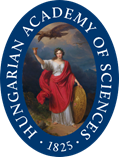 Academic cooperation in control systems research between faculty at the University of Minnesota and the Hungarian Academy of Science and Budapest Technical University began in 1978 with a National Science Foundation program for exchange of scholars between the institutions. Early participants in the program were Professors William Garrard (AEM), K. S. P. (Pat) Kumar (EE), and E. Bruce Lee (EE) at the University of Minnesota and Professors Laszlo Kevickzky , Csilla Banyasz, and Robert Tuschak in Hungary. Later Professors Gary Balas (AEM) and Jozsef Bokor were instrumental in continuing the program. Many other individuals participated in the program including Tamas Keviczky and Balint Vanek, two Hungarians who received their PhDs in AEM at the University of Minnesota.
Academic cooperation in control systems research between faculty at the University of Minnesota and the Hungarian Academy of Science and Budapest Technical University began in 1978 with a National Science Foundation program for exchange of scholars between the institutions. Early participants in the program were Professors William Garrard (AEM), K. S. P. (Pat) Kumar (EE), and E. Bruce Lee (EE) at the University of Minnesota and Professors Laszlo Kevickzky , Csilla Banyasz, and Robert Tuschak in Hungary. Later Professors Gary Balas (AEM) and Jozsef Bokor were instrumental in continuing the program. Many other individuals participated in the program including Tamas Keviczky and Balint Vanek, two Hungarians who received their PhDs in AEM at the University of Minnesota.

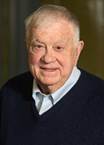


(AEM professors who have participated in this exchange of scholars – from left to right, Peter Seiler, William Garrard, Jozsef Bokor, and Gary Balas)
Regarding the collaborative efforts between the universities, Professor Garrard stated, “This program has been so successful and long lasting because of the personal relationships that have developed among the participants as well as the commonality of academic interests.” The Hungarian collaboration spans multiple research topics; for instance, one of the purposes of this program is to “research and demonstrate flexible aircraft that can morph their shape to optimize performance across the flight envelope. This technology will enable future aircraft that are much more fuel efficient and quiet. The five-year research program consists of flight tests at the University of Minnesota on the mAEWing1 and mAEWing2 research vehicles and at NASA Armstrong on the X-56A vehicle”
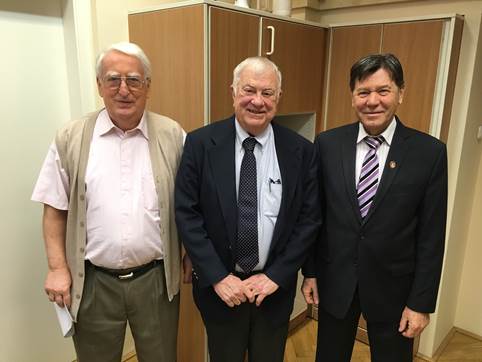
(photo of László Keviczky, Bill Garard, and Jozsef Bokor)
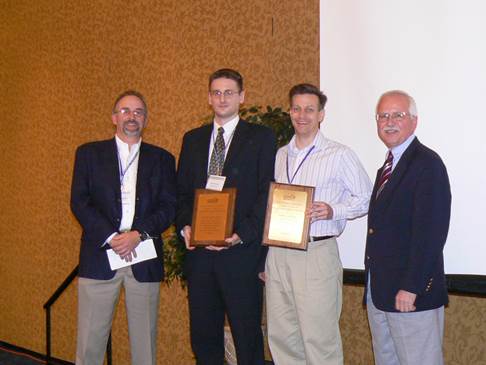
(A photo of Gary receiving the O. Hugo Shuck paper with Tamás Keviczky.)
Professor Seiler spent his sabbatical during the 2017-2018 academic year visiting the Hungarian Academy of Sciences’ Institute for Computer Science and Control (MTA Sztaki, https://www.sztaki.hu/en). He collaborated with Professor Jozsef Bokor and Dr. Balint Vanek during his visit. The main topic of collaboration was the design and control of flexible aircraft for improved fuel efficiency. Specifically, the efficiency of aircraft can be improved using designs that feature less weight and longer, more slender wings (higher aspect ratio). A downside to such designs is that the aircraft becomes more flexible. The increased flexibility can lead to large vibrational motions that damage the aircraft. Active control can be used to reduce these motions and enable more fuel efficient aircraft designs. This research couples aerodynamics, structural dynamics, and control design and falls under a topic known as aeroservoelasticity. The University of Minnesota has a NASA project to study these effects entitled "Lightweight Adaptive Aeroelastic Wing for Enhanced Performance Across the Flight Envelope” (paaw.net). This project was initiated by former department head Gary Balas. It is now led by Dr. Seiler jointly with several partners including Virginia Tech, Systems Technology Inc., Dave Schmidt and Associates, CMSoft, and Aurora Flight Sciences. MTA Sztaki has a related European Union Horizon 2020 project entitled “Flutter Free Flight Envelope Expansion for Economical Performance Improvement” (flexop.eu). Both projects are designing, modeling, and testing small-scale flight demonstrators to validate techniques for improved aircraft design.
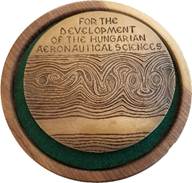
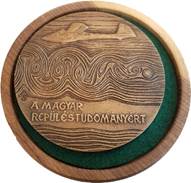
(Hungarian Aeronautical Science Award designed by Enro Rubik [Hungarian Aircraft Designer] & given to Prof. Seiler) (https://en.wikipedia.org/wiki/Ern%C5%91_Rubik_(aircraft_designer)) – father of the designer of the Rubik’s cube)
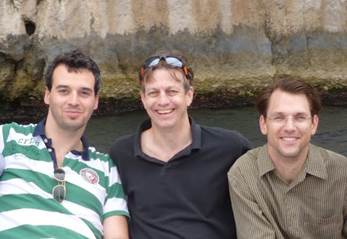
(Balint, Balas, and Seiler)
Professor Seiler’s research expertise is in control systems with applications to aerospace systems and wind energy. Modern control systems are typically designed using a model of the aircraft dynamics. One aspect of Professor Seiler’s research is to develop tools to analyze the effect of model uncertainty and nonlinearities on system performance. He also develops the theory required to design control algorithms that are robust to model uncertainty and nonlinearities. Professor Seiler is currently applying his tools to make wind energy more cost-effective. Advanced control algorithms can increase the power capture and reduced structural loads on large, industrial scale wind turbines. Another aspect of his research is to develop algorithms to increase the reliability of safety critical systems.
He previously worked on the flight control electronics for the Boeing 787 aircraft. Commercial aircraft achieve remarkable levels of safety and reliability mainly using redundant components, e.g. multiple redundant computers. He hopes to develop algorithms to achieve high levels of reliability in other domains, e.g. unmanned aerial vehicles and automotive vehicles, without using redundant components.
Professor Seiler joined the Department as a tenure-track Assistant Professor in August 2011. He received his Ph.D. in Mechanical Engineering from the University of California at Berkeley in 2001. He joined the faculty as a tenure-track Assistant Professor at the University of Illinois at Urbana-Champaign in 2002 and was there for two years. In 2004 Professor Seiler decided (on his own) to move to industry, and worked at Honeywell from 2004 to 2008. At Honeywell, Professor Seiler worked on a number of important aerospace projects including design of a fault tolerant flight control system for the Boeing 787. Professor Seiler returned to academia as a senior research associate in Professor Gary Balas’s research group in AEM at Minnesota, before being hired as an Assistant Professor in 2011. He was promoted to Associate Professor in 2016.
Please join the department in congratulating Professor Peter Seiler on his award and accomplishments. We wish him continued success in his future endeavors.
Professor Peter Seiler’s Faculty Page
Hungarian Academy of Sciences
Hungarian Academy of Sciences’ Institute for Computer Science and Control (MTA Sztaki)


